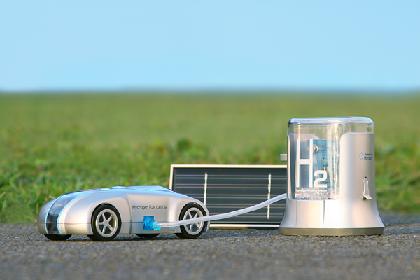Hydro Power Without the Dams: Ontario Invests in Free Flow Underwater Turbines
by Michael Graham Richard, Ottawa, Canada  on 04.14.08
on 04.14.08

Wouldn't it be nice if we could generate clean power from rivers without having to dam them? That's what Verdant Power is trying to do with its free flow turbines (which we've covered in the past: "Lunar Power" comes to New York and NBC Coverage of Wave and Tidal Power).
The Cornwall Ontario River Energy Project - 15 Megawatts
The province of Ontario is investing C$2.2 million into a project to demonstrate the feasibility and commercial viability of using free flow turbines to harness some of the St. Lawrence River's kinetic energy and turn it into electricity.
This project is for 15 megawatts, enough to power 11,000 average-sized homes, but Verdant estimates that "there is enough potential power in the water currents of Canada’s tides, rivers and manmade channels to generate 15,000 MW of electricity using its technology". That would be about the equivalent of 15 big coal power plants.
But we have to wonder... Did they pick Cornwall just because they could make a really cool acronym? The Cornwall Ontario River Energy (CORE) Project.

How Does a Free Flow Underwater Turbine Work?
Very simply, it works like a wind turbine, but the blades are moved by a water current instead of by the wind. "The turbine blades rotate slowly allowing fish to pass through safely with minimal environmental impact." Of course, the impact won't be zero, but if we consider that Ontario is currently getting a good amount of its power from coal plants, this definitely looks like a step in the right direction.
One key difference with wind turbines is that free flow hydro turbines are not visible, so the "not in my backyard" (NIMBY) attitude shouldn't be a problem. Another benefit over wind power is that hydro delivers power more predictably.

Tidal Power in the East River in New York City
These free flow turbines can also be used to harness tidal currents, as was shown with the Roosevelt Island Tidal Energy Project (pdf) in New York City's East River. There, Verdant Power has installed its 5-meter, 35-kilowatt models. The first 6-turbine array is already working, and when completed (100-300 turbines), the project should generated 10 megawatts of power, enough for 8,000 homes.
The Future of Free Flow Hydropower Turbines
It's probably still too early to know how cost-competitive this technology will be. What we do know is that there won't be a clean energy silver bullet, so it is important to keep improving in that area even if other types of renewable energies are ahead right now (wind, solar, and even wave power). Best of luck to Verdant Power!

























